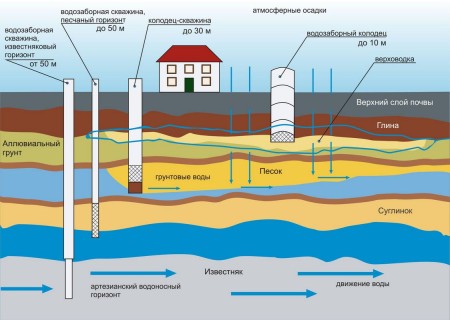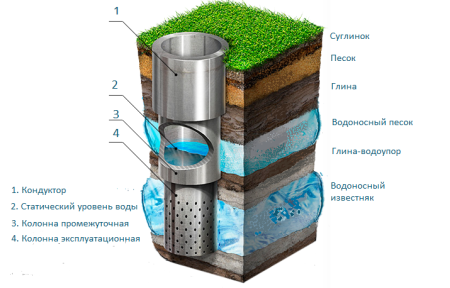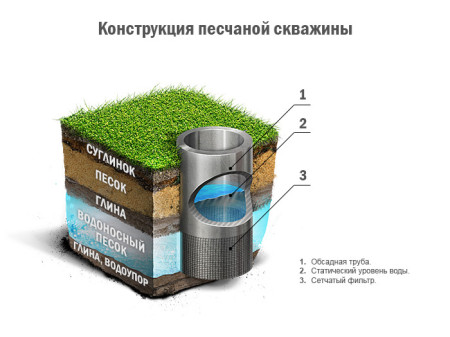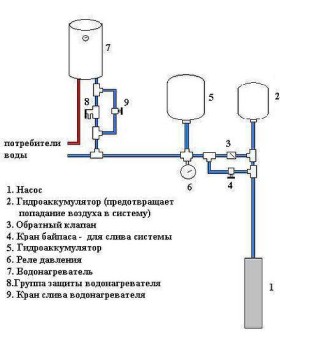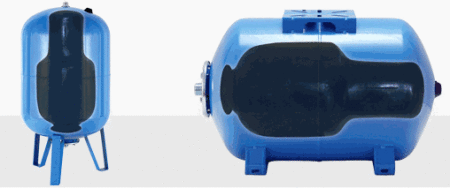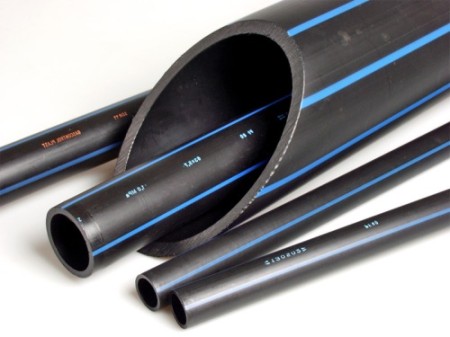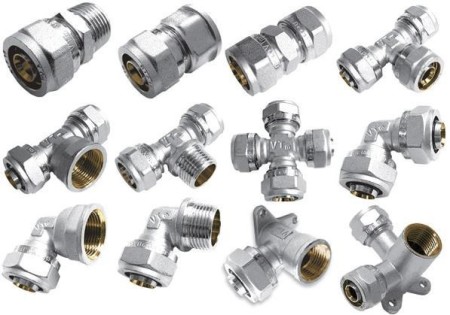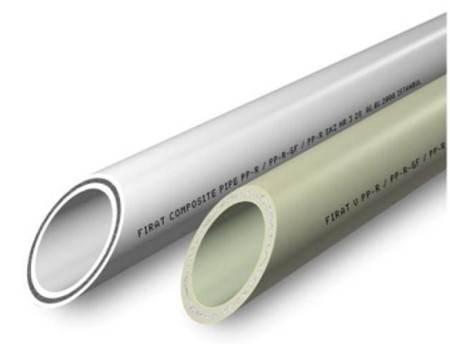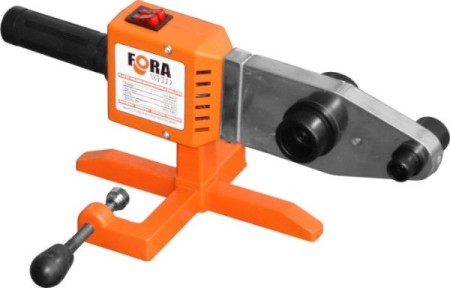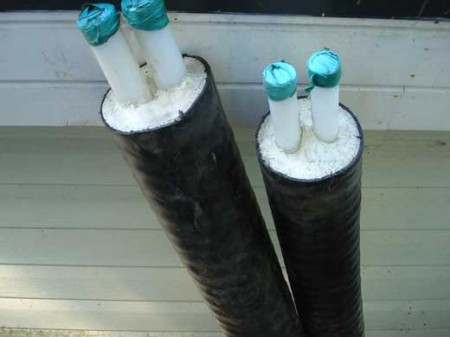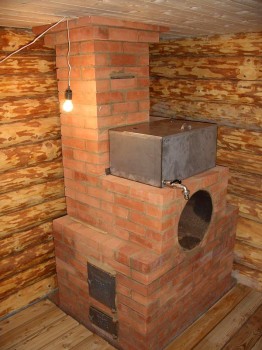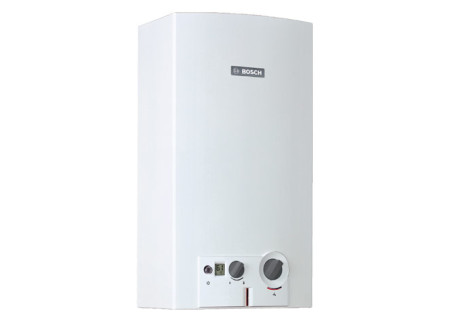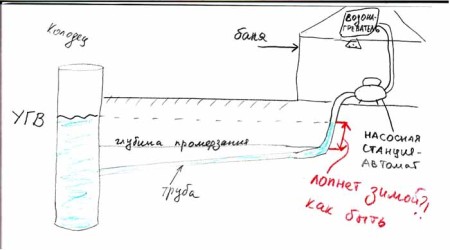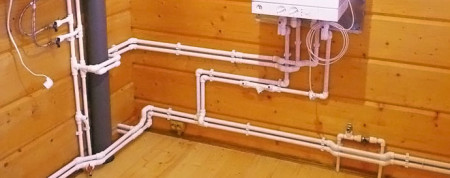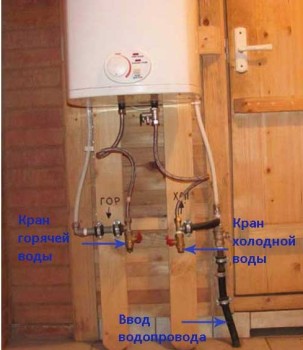Comfortable use of the bath is possible only if the building has a water pipe. This allows at any time, in summer and in winter to have at your disposal the right amount of hot and cold water, which is undoubtedly very convenient.
Of course, if there is an opportunity to connect to the central water supply system, the problem with water supply can be solved simply - you only need to get permission to connect to the network, bring pipes to the bath, make wiring inside, and install all necessary equipment.
But if there is no running water nearby, and water is needed in the bathhouse and on the site all year round? Such situations are very common. Of course, it is not important to carry water from the well manually in the 21st century, especially since there are many options for solving this problem.
Content
Variants of water supply sources
Below we will consider several options for water sources for a suburban or suburban area in the absence of a central water supply. We will tell you how the construction of water supply in the bath from its own well and well. Consider the features of water supply in summer and winter.
Normal water supply of the bath means the constant presence of water in the building, regardless of the season. And if it is not so difficult to heat the water - with the help of a stove or an electric boiler, then the supply can cause problems, since the pressure in the system is created and maintained by a pumping station, the choice and installation of which requires the availability of experience and skill. Within the framework of this publication, we will consider several of the most popular water supply options for a village bath from different sources.
So, the first problem to be solved is the source of water.
It can be:
• Well.
• Well.
• Central water supply.
The simplest option in this situation is, of course, the connection to the water supply. To do this, you need to get permission, then act in the following order:
• Collect pipeline and equipment inside the bathhouse.
• Pipeline from the central highway to the bathhouse.
• Test and run water in the bath
well as a source of water for a bath
People have been using wells since ancient times. Water can be drawn from an already existing well, for example, by negotiating with neighbors, or digging up your own. This is one of the most inexpensive, reliable and simple options to provide water to your country or country plot.
From the minuses can be noted:
Doubtful water quality, it can be highly polluted during spring floods or intense rain. In addition, there may be differences in the water level, which is fraught with the failure of equipment. The walls in the well are most practical to make of the ready-made concrete rings, which are joined together by a spike into the groove. Such a connection ensures the stability of the well shaft in case of ground movement.
It is very desirable to seal joints between concrete rings, so that dirty water from the upper layers of the soil does not fall into the shaft. A layer of small gravel is placed on the bottom of the well, or several layers of geotextile are laid.
But if there is no well and the problem with water needs to be solved quickly, a so-called Abyssinian well can be used as a temporary source of water. This is a simple metal pipe, which is driven into the ground to the aquifer. Abyssinian well is good if the water on the site lies near the surface of the ground - no deeper than 12 meters.
The main nuance in the arrangement of the Abyssinian well is the method of making the pipe itself. Its end is made like a spear. Above the tip, several rows of holes are drilled through which water will enter the pipe.
Increase this improvised well gradually, section by section, driving them into the ground - until the aquifer is reached. The optimum water level in the Abyssinian well must be at least one meter.
The pump is installed from above, if the depth of the well is less than 7 meters. At a greater depth, a submersible pump is required.
well as a source of water for a bath
All wells can be divided into two types - sand and artesian.
The variant with an artesian well can be excluded - it is quite expensive and requires the use of special heavy equipment. In addition, water from deep aquifers is considered a strategic state resource, and an artesian well needs to be licensed. The water from the artesian well is very clean, its stock is almost unlimited. The meaning of arranging an artesian well is only if the collective water supply from a well of several farms is organized.
The sandy well is drilled to a depth of no more than 30 meters, to the so-called upper aquifer. It may become clogged with time, which will lead to equipment breakdown. To avoid this, a so-called filtration column is arranged in the sand well. Advantages of sand wells are the speed of their construction and relative cheapness.
Disadvantages:
• Impossibility of accurately predicting the volume of water in the well.
• A sandy well rarely supplies more than 1 cubic meter of water per hour.
• The sand hole becomes clogged with time.
Water supply of the bath, scheme
• Water pump.
• Automation, pressure sensor.
• Accumulation accumulator.
• Bypass valve - designed for draining water from the water supply system.
• Automatic pressure switch.
• Non-return valve for the pump.
• Equipment for water heating.
• Filter, etc.
No matter from which source water is supplied to the bathhouse, a pumping station is necessary in any case. To ensure the water supply of the baths, submersible and exhaust pumps are used - depending on the depth at which the aquifer is located. Attention is also paid to the diameter of the well and the pressure in the system.
Professionals recommend to stop the choice on systems with a hydroaccumulator.
From the source, water is fed into the system through an outlet pipe, which must enter the well or well below the freezing point of the ground. The entrance of the pipe is necessarily sealed. Multilayer waterproofing is done with the use of silicone, liquid glass and glue for ceramic tiles.
To ensure that the pump does not work continuously, and also to create a water reserve, a storage tank of up to 50 liters capacity is installed. The pressure in the system is also maintained using the tank.
Pipes for water supply
Choose the pipes you need depending on - when the bathhouse is operated - all the year round or only in the summer. In the latter case, you can save considerably by purchasing a flexible reinforced watering hose.
They are very simply connected by means of adapters. Such a temporary water supply does not even need to be buried in the ground. In autumn the system is dismantled, all hoses are removed to the premises before the next season. If the household water supply of the bathhouse is to be provided all year round, its organization will require much more time, effort and resources.
In order to connect the pumping station and bring the water supply to the building, polyethylene pipes with a diameter of up to 32 mm are required.
For the remaining wiring, a pipe of 25 mm is sufficient. With pipes made of metal-plastic, it is easy to work, however, metal fittings with gaskets are used at the connection points, which will quickly become unusable on the street.
Therefore, outside the building you can use a polypropylene pipe, which is welded and does not lose its characteristics for a long time - such a pipe can safely be laid in trenches and used for hot water supply. Working with polypropylene requires some experience. You will also need a tool - a welding machine for polypropylene.
On sale there are also pipes, reinforced with aluminum foil or fiberglass. Both options are perfect for a bathtub.
Choosing a water heater for the bath
In the case where the building of the bath is located next to the residential house, you can lay a pipe with hot water directly from the boiler heating, constructing something like a heating main. Of course, the pipe will have to be thoroughly insulated, and in the cold season there will inevitably be heat losses.
It is much easier and more economical to organize hot water supply in the bathhouse right on the spot. For this purpose, it is possible to use a furnace with a built-in metal container, preferably stainless steel.
Water in such a container will retain heat for a long time. However, sauna owners prefer more modern and practical ways - with the help of flow or storage water heaters.
For example, a flow-through gas boiler is characterized by high capacity, but expensive in operation.
Most often in the baths are installed electroboilers of storage type.
Their volume depends on how many people on average visit the bath at the same time. For example, for 3-4 people there will be enough 100 liters of hot water.
Features of water supply for bathhouses in winter
If the water supply and heating of the residential house and the baths are a single scheme, then there will be no problems. But if the premises in winter are not heated and freezes, everything is somewhat more complicated. Water pipes are laid to a depth that exceeds the freezing point of the ground. So, for the middle zone of Russia it will be within 1.5 meters. This means that the pipes must be laid no less than 1.7 meters.
One of the best materials is polypropylene. Pipes need to be insulated with a moisture resistant material. Well, and to ensure that the frost is not guaranteed to reach the pipes, an additional cushion of heat-insulating material is laid on top, after which it is covered with a layer of soil.
If the bath room is not heated in winter, after the end of the bath procedures, all the water from the system must be drained, since in severe frost the temperature in the room and on the street can be the same.
For a water pipe operated year-round, it is necessary to install a pressure sensor and a non-return valve. These elements are installed before the entrance of the pipe into the building.
The device of water supply of baths in stages
Preparation of the source of water supply.
Piping water pipes to the building of the bath.
Installation of all necessary elements: ball valves, water filters, check valves, etc. From the hydraulic accumulator a pipe with cold water is supplied to the boiler. Before the boiler, install a tee to which cold water taps are connected. At the exit from the boiler, a hot water pipe is connected to which cranes are attached.
When distributing pipes inside the building, first all vertical risers are installed. The horizontal roads are laid later. After the system is assembled, a test run is made. The ball valve opens, all the waterways fill with water, the connections are inspected for leaks. If the water flows from the faucets continuously, it means that the entire system is full, and there is no air inside.
Next, close the taps with cold water and turn on the pump to check the operation of the automation. The pump should start when the pressure in the pipes drops to about 1.4-1.6 bar, and turn off when it reaches 2.2-2.5 bar. As soon as the pressure has reached the desired level, the electric boiler is switched on. This is one of the simplest schemes, and it is quite possible for a person with some experience in plumbing to make water supply in the bath with his own hands.



